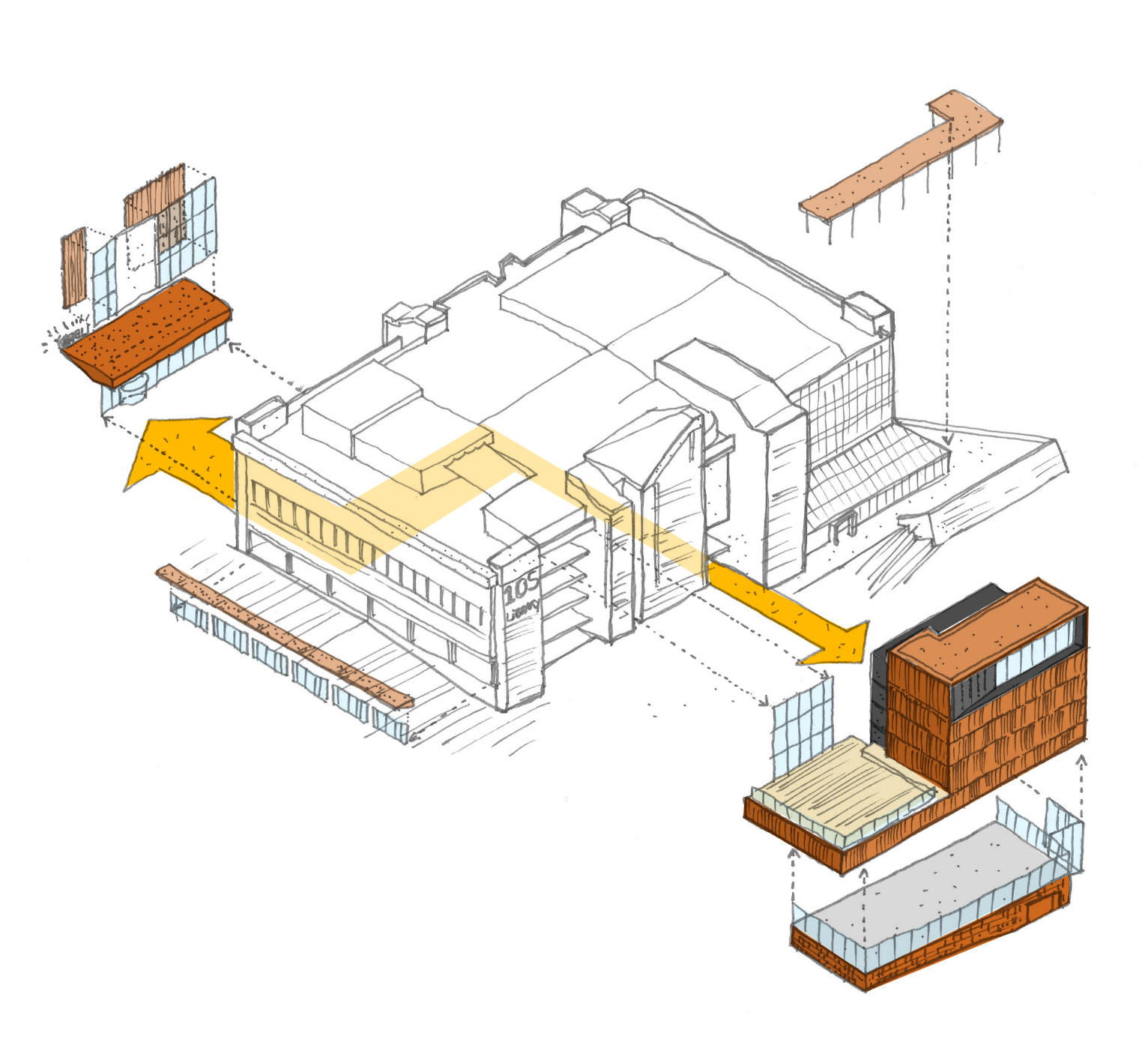Modern architecture is known for its sleek, streamlined design, but it’s also often been aptly characterized as being cold and sterile. In Perth, Australia’s Curtin University, one such building is getting a major makeover.
The TL Robertson Library, which has two million users per year, is being revamped by Danish architectural firm Schmidt Hammer Lassen Architects, with the help of Australian architecture firm Hames Sharley. The changes are meant to help the building be more user-friendly and also fit better into the green campus.
Constructed in 1972, the library was originally designed with little natural daylight to protect the books and other materials in its collection. Now, Schmidt Hammer Lassen is designing a “living library” by opening up new pathways for visual and physical connectivity in the building, while bringing in more natural light. The new open design is expected to better meet needs of users.

Green spaces and tree-lined walkways characterize Curtin University’s campus. With the TL Robertson Library centrally located on the campus, which makes it a natural focal point, the school’s leaders wanted to take better advantage of that location and the possibilities inherent in the building.
The new architectural design will invite the landscape in, using timber and other natural materials to enhance the warmth of the building. Elongated windows are meant to provide better views of trees in the adjacent park.
With its redesign, the library will fit the goals of the university and its staff and students.
“We were driven by three core principles when designing TL Robertson Library: openness, access and well-being,” said Morten Schmidt, Founding Partner of Schmidt Hammer Lassen. “The redevelopment complements the building’s original features with bold, contemporary architectural interventions that focus on warm, natural materiality, and contrast the current structure with open lightness.”
The warmth that will be engendered by the library’s redesign also is expected to encourage the space to be more often used as a community gathering spot, too.
“This project will support the TL Robertson Library’s role as a key meeting place and activity centre on Curtin’s Perth Campus and its transformation into a place for digital innovation and social collaboration for students, staff, and the wider community,” said Professor Deborah Terry, Vice-Chancellor at Curtin University.



Related Stories
| Jun 12, 2014
Tod Williams Billie Tsien Architects' design selected for new UCSC facility
The planned site is a natural landscape among redwood trees with views over Monterey Bay, a site that the architects have called “one of the most beautiful they have ever worked on.”
| Jun 12, 2014
Austrian university develops 'inflatable' concrete dome method
Constructing a concrete dome is a costly process, but this may change soon. A team from the Vienna University of Technology has developed a method that allows concrete domes to form with the use of air and steel cables instead of expensive, timber supporting structures.
| Jun 11, 2014
5 ways Herman Miller's new office concept rethinks the traditional workplace
Today's technologies allow us to work anywhere. So why come to an office at all? Herman Miller has an answer.
| Jun 9, 2014
6 design strategies for integrating living and learning on campus
Higher education is rapidly evolving. As we use planning and design to help our clients navigate major shifts in culture, technology, and funding, it is essential to focus on strategies that help foster an education that is relevant after graduation. One way to promote relevance is to strengthen the bond between academic disciplines and the campus residential life experience.
| May 29, 2014
7 cost-effective ways to make U.S. infrastructure more resilient
Moving critical elements to higher ground and designing for longer lifespans are just some of the ways cities and governments can make infrastructure more resilient to natural disasters and climate change, writes Richard Cavallaro, President of Skanska USA Civil.
Sponsored | | May 27, 2014
Grim Hall opens the door to fire safety with fire-rated ceramic glass
For the renovation of Lincoln University’s Grim Hall life sciences building into a state-of-the-art computer facility, Tevebaugh Associates worked to provide students and faculty with improved life safety protection. Updating the 1925-era facility's fire-rated doors was an important component of the project.
| May 20, 2014
Kinetic Architecture: New book explores innovations in active façades
The book, co-authored by Arup's Russell Fortmeyer, illustrates the various ways architects, consultants, and engineers approach energy and comfort by manipulating air, water, and light through the layers of passive and active building envelope systems.
| May 19, 2014
What can architects learn from nature’s 3.8 billion years of experience?
In a new report, HOK and Biomimicry 3.8 partnered to study how lessons from the temperate broadleaf forest biome, which houses many of the world’s largest population centers, can inform the design of the built environment.
| May 13, 2014
19 industry groups team to promote resilient planning and building materials
The industry associations, with more than 700,000 members generating almost $1 trillion in GDP, have issued a joint statement on resilience, pushing design and building solutions for disaster mitigation.
| May 11, 2014
Final call for entries: 2014 Giants 300 survey
BD+C's 2014 Giants 300 survey forms are due Wednesday, May 21. Survey results will be published in our July 2014 issue. The annual Giants 300 Report ranks the top AEC firms in commercial construction, by revenue.

















